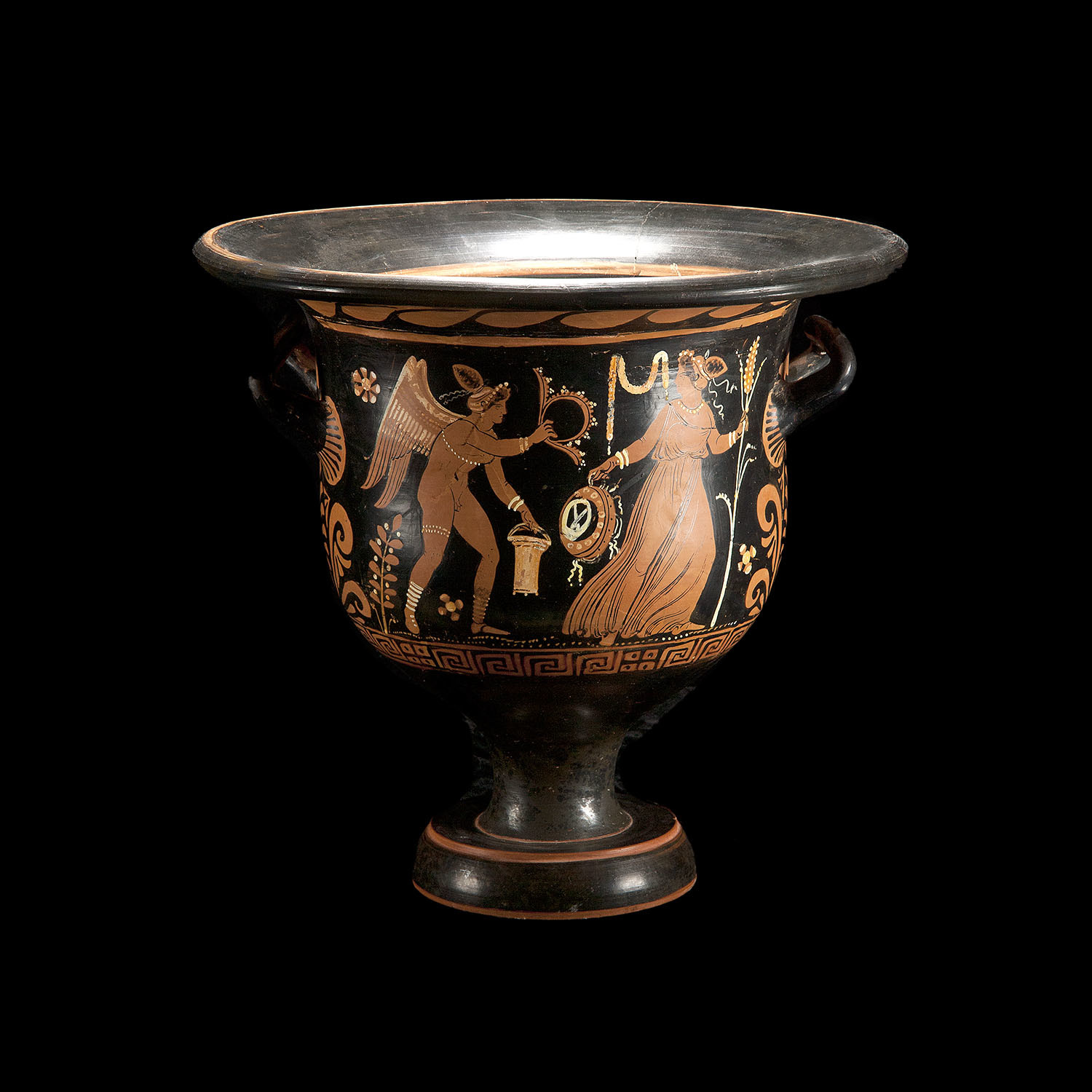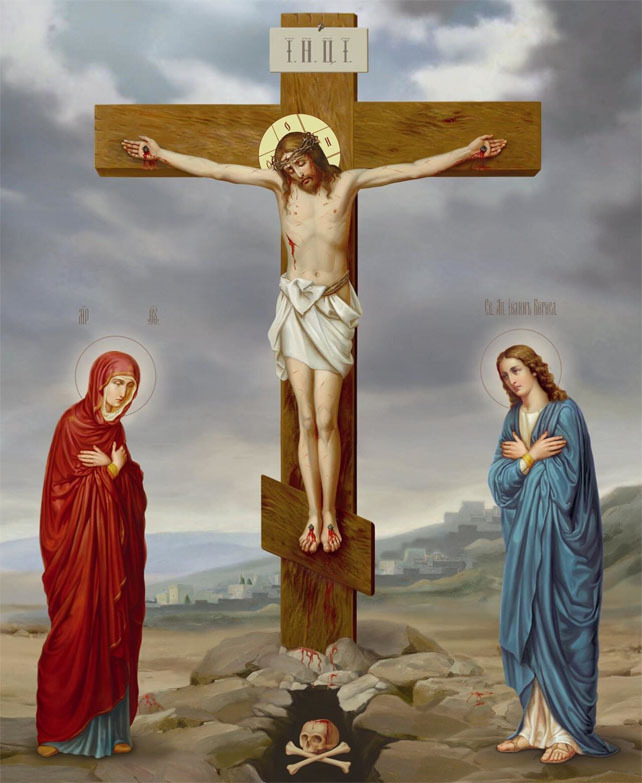Russian Bear
Member
- Jul 21, 2025
- 14
- 0

The Symbol of Faith of Orthodox Christians (Nicene Creed)
I believe in one God, the Father Almighty, Maker of heaven and earth, and of all things visible and invisible: And in one Lord Jesus Christ, the Son of God, the Only-begotten, Begotten of the Father before all ages, Light of Light, True God of True God, Begotten, not made; of one essence with the Father, by whom all things were made: Who for us men and for our salvation came down from the heavens, and was incarnate of the Holy Spirit and the Virgin Mary, and became man; And was crucified for us under Pontius Pilate, and suffered and was buried; And rose again on the third day, according to the Scriptures; And ascended into the heavens, and sitteth at the right hand of the Father; And shall come again, with glory, to judge both the living and the dead, Whose kingdom shall have no end. And in the Holy Spirit, the Lord, the Giver of Life, Who proceedeth from the Father, Who with the Father and the Son together is worshiped and glorified, Who spake by the Prophets; In One Holy Catholic and Apostolic Church. I Confess one Baptism for the remission of sins. I look for the Resurrection of the dead, And the life of the age to come, Amen.
Orthodoxy (Greek ὀρθοδοξία (orthodoxy) - correct judgment, correct teaching, correct glorification (from Greek ὀρθός - straight, standing straight, correct, + δοκέω - I think). A Greek word that literally means "right teaching" or "right worship", as it comes from the two words "right" and "teaching" or "worship", as well as "glory". Since even in early Christian times false teachings and interpretations began to multiply, threatening the purity and correctness of church teaching, the definition of “Orthodox” began to be applied to the latter quite logically. The Orthodox Church carefully protects the truth from all kinds of errors and deviations in order to protect its flock and correctly glorify Christ, whose Body it is.
1) True religious teaching about God, about His creation and His relationship to this creation, about the vocation and purpose of man, about the ways for man to achieve salvation, given through the Lord Jesus Christ, revealed to man through the grace of the Holy Spirit, constantly abiding in the One Holy Catholic and Apostolic Church of Christ;
2)The only true direction of Christianity.
The concept of "Orthodoxy" includes three interrelated parts.
Firstly, the word "Orthodoxy" has a doctrinal meaning. By Orthodoxy we must understand pure, integral and uncontaminated Christian doctrine as revealed in the dogmas of the Church. In the dogmatic sense, Orthodox teaching opposes all heresies as distortions of Christianity and reflects the fullness of knowledge about God available to the human race. In this sense, the term "Orthodoxy" is found already in the writings of the apologists of the second century (in particular, Clement of Alexandria).
Secondly, the word "Orthodoxy" has an ecclesiological or ecclesiological sense. Orthodoxy is to be understood as a community of autocephalous Christian local Churches having Eucharistic communion with one another.
Local Orthodox Churches
The essentially unified Universal Orthodox Church consists of 16 Local Orthodox Churches. Each of the Local Churches has administrative independence (autocephaly) from the others and is headed by its own Primate – the patriarch, archbishop or metropolitan. The head of the entire Universal Church is the Lord Jesus Christ.
1) Moscow Patriarchate
2) The Patriarchate of Antioch
3) The Patriarchate of Jerusalem
4) Serbian Patriarchate
5) Romanian Patriarchate
6) Bulgarian Patriarchate
7) Georgian Patriarchate
8) Polish Church
9) Albanian Church
10) Czech Church and Slovakia
11) The Orthodox Church in America
12) Macedonian Church
13) Ecumenical Patriarchate of Constantinople (communion temporarily severed)
14) Patriarchate of Alexandria (communion temporarily severed)
15) Church of Greece (communion temporarily severed)
16) Church of Cyprus (communion temporarily severed)
Thirdly, the word "Orthodoxy" has a mystical meaning. Orthodoxy should be understood as the Christian spiritual practice (experience) of knowing God through the acquisition of the divine grace of the Holy Spirit, which saves and transforms (deifies) man.
All three meanings of Orthodoxy are interrelated, and it is impossible to imagine one of them without the other. Orthodox doctrine has its source in mystical experience and is taught in the Church of Christ. The Orthodox Church sets forth one dogmatic doctrine based on one mystical experience. Orthodox mystical experience is expressed in the doctrine preserved by the Church.
When did Orthodoxy originate?
Orthodoxy, as the correct, true faith and proper worship, was founded by Jesus Christ, i.e. Orthodoxy is the original, authentic Christianity. Until 1054, the Christian faith was unified and called the One Holy Apostolic Church, which included the Western Church (capital Rome) and the Eastern Church (capital Constantinople). In 1054 the Western Church (whose centre of government was Rome) contrary to the will of God because of the ambitions of the papal power entered into a schism, proclaiming itself the Catholic Church, thereby separating from the One Holy Apostolic Church, so the Great Schism occurred.
The Western Church (Catholic Church) did not hold fast to the truth and fell into sins, committing ungodly acts not in accordance with the teachings of God, after which it gave rise to new Protestant schisms.
The Eastern Church maintained its holiness and truthfulness, after which it proclaimed itself the Orthodox Faith, preserving the teachings of God Jesus Christ, before and after the Great Schism.

Two thousand years ago, Jesus Christ, the Son of God, came to earth and founded the Church through His apostles and disciples for the salvation of man. Subsequently, the apostles spread the Church and its teaching throughout the world; they founded a number of local Churches, which are united by faith, worship, and participation in the sacraments of the Holy Church.
Churches founded by the apostles personally include the Patriarchates of Constantinople, Alexandria, Antioch, Jerusalem and Rome. The Church of Constantinople was founded by St. Apostle Andrew the First-Called, the Church of Alexandria by St. Evangelist Mark, the Church of Antioch by St. Apostle Paul, the Church of Jerusalem by St. Paul and James, and the Church of Rome by St. Apostles Peter and Paul. In subsequent years, thanks to the missionary activities of the first Churches, the Sinai, Russian, Greek, Serbian, Bulgarian, Romanian and other Churches were created.
Each of these churches was independent in its administration, but they were all connected by the unity of faith, creed, apostolic tradition, sacraments and worship. Together they formed a Single Holy Catholic Apostolic Church. Over the course of several centuries, this was gradually revealed at church councils, supplemented with more precise formulations in polemics with heretics and explained to believers in sermons. At some point, the term "Orthodoxy" appeared to distinguish Christians who adhere to the true apostolic teaching from heretics and false teachers. The division into Catholicism and Orthodoxy occurred in 1054. The Roman Church separated from the One Holy Apostolic Church and declared itself Catholic, which means the universal Church, and the One Holy Apostolic Church declared itself Orthodox, which means to properly glorify and follow the teachings of God. The prerequisites for this appeared much earlier, the main reasons for which were:
The struggle of the Popes for world leadership in the Church;
Dogmatic and liturgical differences between the Christian life of the East and the West.
Political differences also played a role. If Rome used to be a single empire, then due to political unrest it was divided and even a new capital appeared in the east - Constantinople. The center of the modern Roman Catholic Church remained in Rome.
Disagreements regarding languages also played a role. In the East, Greek dominated, and in the West, Latin. In the East, John Chrysostom was more revered, in the West - St. Augustine. Mutual discontent grew and resulted in a serious schism, due to which there are now different Christian denominations. The official reason was the Filioque, a Latin doctrine according to which the Holy Spirit emanated not only from God the Father, but also from the Son. This teaching is still one of the main stumbling blocks in matters of unification of the Churches. The difference in the interpretation of some passages of the Gospel became the reason for other disputes.
Thus, Orthodoxy denies the Dogma of the Immaculate Conception of the Virgin Mary. Orthodoxy believes that the Mother of God was born involved in original sin, like an ordinary person, but was chosen by God, through her Righteousness, participation in the passions of Christ, strengthened in holiness and approached the Lord more than any other person.
The doctrines of salvation and justification also differed. The Roman Catholic Church traded indulgences precisely because the doctrine perceived the Covenant as a Contract in the legal sense. There was a certain set of good deeds that the Church could spend at its own discretion. Including use for the remission of sins.
In Orthodoxy, such ideas are rejected, as is the doctrine of purgatory, as the opportunity to go to heaven, having been cleansed of sins through torment.















